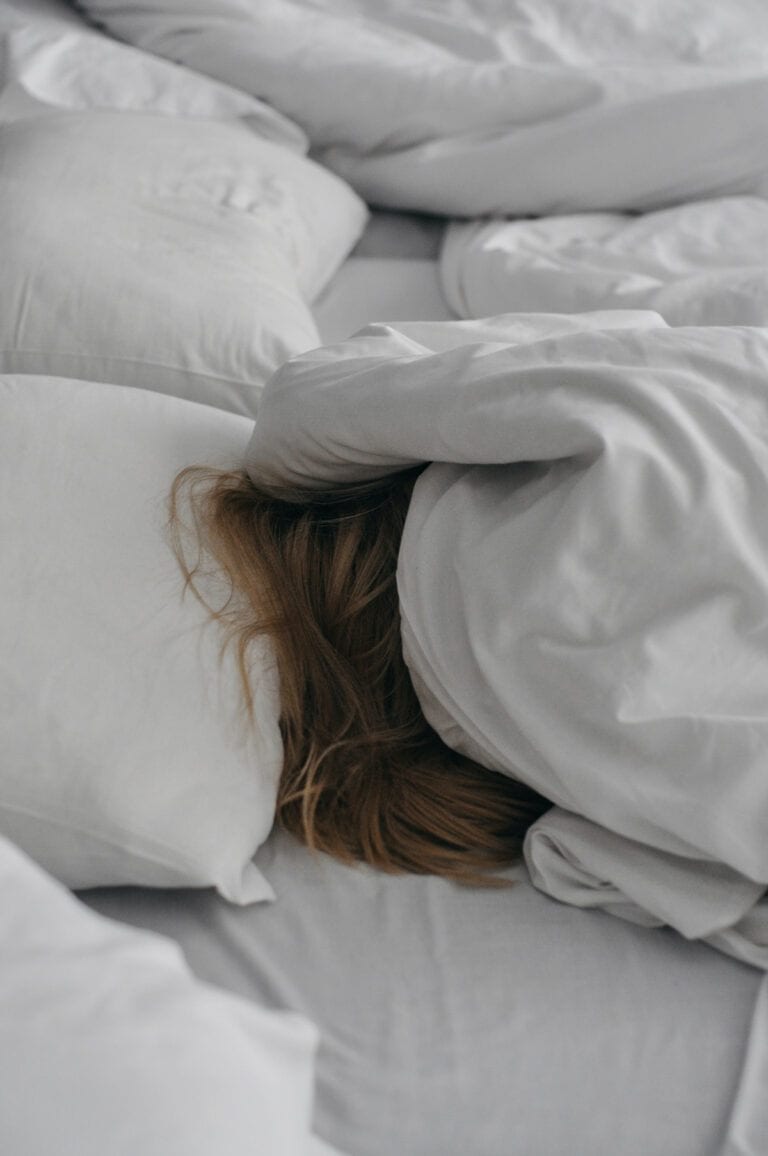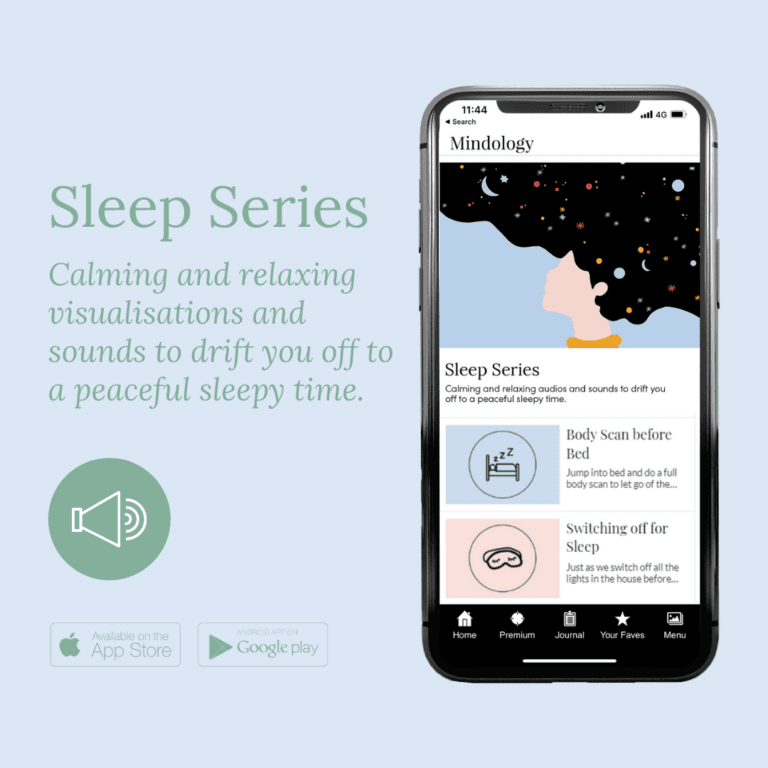I once asked a Neuroscientist what her number one health tip was… and without any hesitation, she replied – Sleep.
You see the notion that not much happens when we sleep; hence we don’t need much of it, or we don’t need good quality sleep, is grossly incorrect. Sleep is a crucial time for our mind and body’s wellbeing.
Sleep can make or break us. You know yourself when you have had a crappy night’s sleep – you can forget things, your temper is short-fused, you can’t concentrate despite the multiple cups of coffee. So why exactly is sleep so vital? (And by the way – one in three people struggle with sleep issues, so don’t feel you are alone.)
Firstly, let’s understand what’s happening when we nod off anyway.
Sleep Cycles
When we sleep, we experience four sleep cycles: one is Rapid Eye Movement Sleep (REM) and three that form non-REM (NREM) sleep.
Within the NREM sleep phase, there are three different stages, each Stage can last from 5 to 15 mins, and you go through all three phases before reaching the REM sleep cycle.
You begin the NREM sleep cycle in what is called ‘N1’ stage, move to ‘N2’ and then and move to the deeper ‘N3 Stage.
N1 Stage is essentially the “dozing off” Stage, and it lasts typically just one to five minutes. During this phase, your body hasn’t fully relaxed, but your body and brain activities are starting to slow down. As you move into ‘N2’, your body enters a more subdued state, your body temperature drops, muscles relax, your breathing and heart rate also slow down.
The third Stage of the cycle is ‘N3’ sleep, also known as deep sleep. During ‘N3’ your muscle tone, pulse, and breathing rate decrease, and your brain wave activity is at what is called the ‘delta wave’ frequency.
During REM sleep the brain and body act very differently than they do during other stages of sleep. REM sleep is the stage of sleep most associated with dreaming.

Repair & Rejuvenate
During the deep stages of NREM sleep, the body repairs grow tissue and builds bone and muscle. Vital chemicals that strengthen our immune system circulate in our blood. This is a time of repair and rejuvenation.
Taking Out the Trash
That is what scientists think happens during REM sleep. Your brain clears out the information you do not need. Our brains have their own wastage system. It’s called the Glymphatic system and it’s a macroscopic waste clearance system. Special channels from the spinal column to the brain cavity, clear surplus or toxic materials from corresponding brain fluids.
I like to think of it as when we sleep – it’s like the cleaners come in – they pack and file away important things in the cupboard, sweep the floors, and take the rubbish out.
Research into the impact of poor sleep is showing just how detrimental lack of sleep is. Michigan State University’s Sleep &Learning Lab conducted one of the largest sleep studies to date, and key researcher Associate. Professor Kimberley Fenn concluded that, “Our research showed that sleep deprivation doubles the odds of making place keeping errors and triples the number of lapses in attention, which is startling,”
Placekeepers are defined as the ability to complete a series of steps without losing one’s place – so that means concentration, focus, and cognitive ability. Michelle Stepan, MSU doctoral candidate and Erik Altmann, professor of psychology co-authors of this same study warned; “Sleep-deprived individuals need to exercise caution in absolutely everything that they do, and simply can’t trust that they won’t make costly errors. Oftentimes – like when behind the wheel of a car – these errors can have tragic consequences.”
Sleep Health
If you are suffering with sleep issues here are simple, practical steps to embrace to help improve your sleep. These are creative techniques based on self-hypnosis and self-meditation from our Mindology App.
The Breath
Deep breathing is a simple yet powerful technique. Deep breathing activates our vagus nerve, which in turn tells your brain – ‘it’s ok, relax’. Deep breathing engages the parasympathetic system, which is our “rest and digest” system.
Box breathing is a simple technique to bring in to your sleep routine to calm your mind and body –
- Step 1. : Slowly exhale
- Step 2 : Slowly inhale through your nose to the count of four.
- Step 3:Hold your breath for another slow count of four.
- Step 4: Exhale through your mouth for four.
You can also take this a step further by using your breath’s rhythm as a visualisation tool. Imagine as you breathe in, see the words’ SLEEP’ in your mind, say in your mind ‘SLEEP’, and as you exhale, let go of any thoughts you are holding onto.
Sleep Blanket Body Scan
The progressive muscle relaxation technique of tensing and releasing different muscle groups, moving from your toes to your head, is also a powerful technique to signal to the body – it’s time for rest.
Be creative with this technique and add in visualisation, as you move from the toes up the body, in your mind tell each part of you it’s time for quiet, it’s bedtime. Just imagine each part of your body preparing for a state of deep calm.
Take this further and imagine that a comfy ‘Sleeping blanket’ is being draped on each part of you, starting at your feet, it’s warm and comfortable and soothing, and slowly moving up the legs, all the way up the torso, up to the neck. Each part of your body deeply relaxes and is comfortable.
Visualise Calming Scenes

Visualise yourself floating in the water, relaxing and feeling light. As you float in the water, imagine you are washing the cares of the day off you and drifting into a place of calm, restful sleep. Or imagine you are floating on a cloud up into the skies, ready for a good night’s sleep.
Tweak, Till You Find What Works for You
Unfortunately, it is so easy to slip into a bad sleep routine, so building a consistent positive habit is essential. Have a toolkit of relaxation strategies that work for you. If the thought of floating on a cloud is your worst nightmare, then find what does. Aim to create a sleep routine and habit that suits you and your lifestyle.
And if you have a bad night’s sleep, tomorrow is a new day. Start again tweak the routine. Do what works for you, and this might be a case of trial and error. Be patient with yourself; building new habits does take time, but the benefits are worth it.
Mindology App has a Sleep Series with Sleep Stories, Sleep Sounds and a Sleep Journal to create new, more positive sleep habits.
Sleep tight…

Claire Aristides is a Hypnotherapist, Visualisation & Mindset Consultant and founder of Mindology.App. After completing a Bachelor of Arts (Psychology), Claire entered the business world working in IT, then launching successful fine jewellery brand Aristides Fine Jewels. Hypnosis has had a significant impact in both the business and personal aspect of Claire’s life and it is this passion for hypnosis that she shares with her clients. Check out her work here and follow Claire on Instagram.
Download Mindology App – App Store download https://lnkd.in/gAAphdz
Android download https://lnkd.in/gxBj5v5
The post Why Sleep is the Best Medicine appeared first on Wanderlust.
from Wanderlust https://ift.tt/3qKfrNp
via IFTTT




No comments: